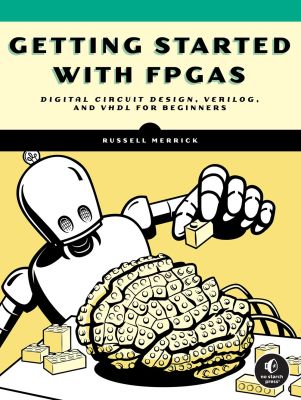FPGAs are reprogrammable integrated circuits used in everything from hardware hacking and hobbyist electronics to aerospace engineering, video processing, and high-frequency stock trading. They're fast, powerful, and incredibly flexible, but they have a notoriously steep bar of entry.�Getting Started with FPGAs�lowers that bar, providing a straightforward introduction to working with FPGAs, without unnecessary jargon or complexity. The book explores FPGAs from the bottom up, starting with a look at the basics of digital logic and the fundamental components that make up FPGAs: look-up tables and flip-flops. Understanding how these components work together is critical to thinking like an FPGA designer. As the chapters progress, readers will learn how to master higher-level FPGA concepts like state machines and crossing clock domains, while working on increasingly sophisticated hands-on projects. Loaded with thoroughly annotated, downloadable code examples in both Verilog and VHDL - the two most popular FPGA programming languages - readers will come away with the confidence and experience to pursue their own FPGA projects.

